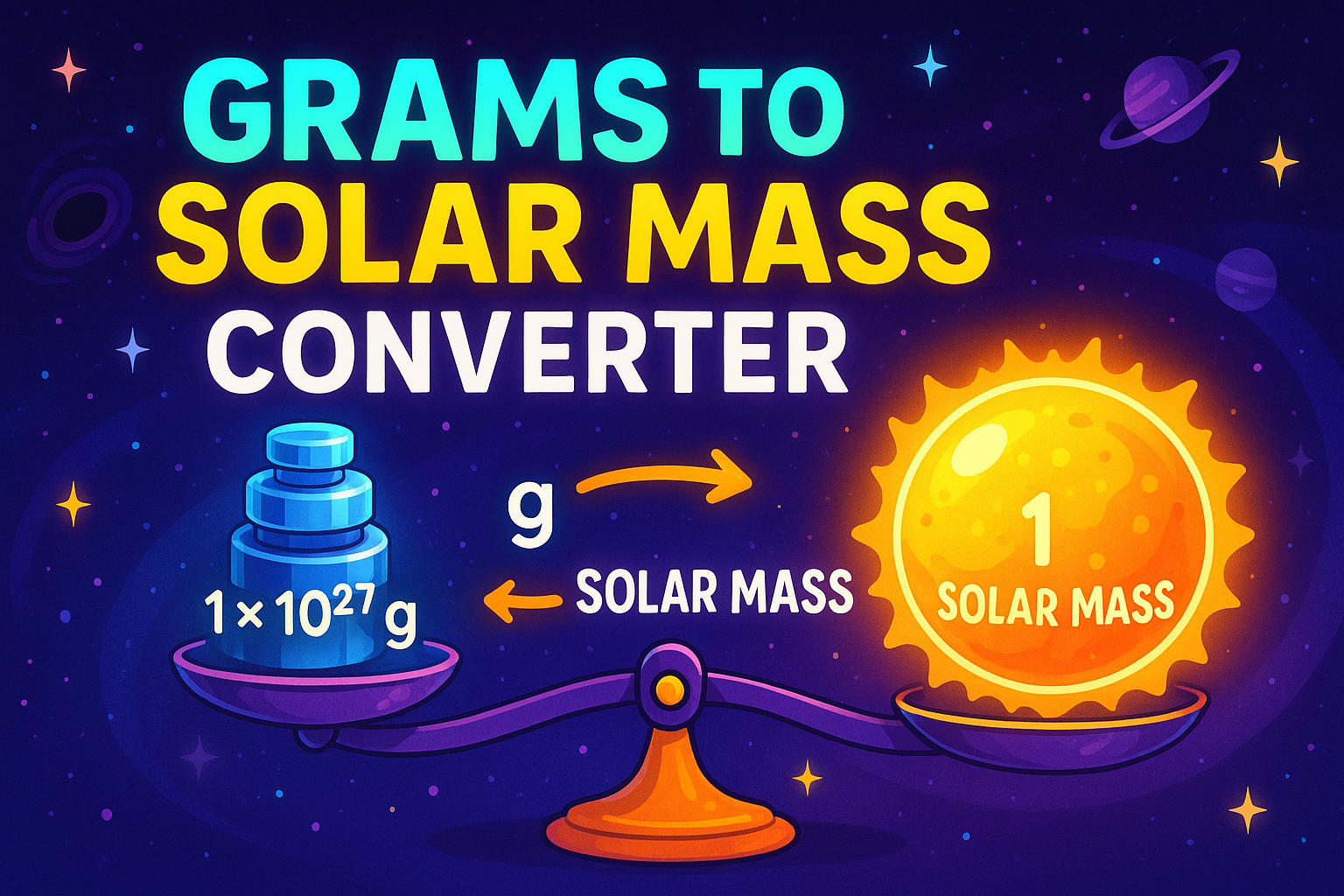grams to Solar mass – How to convert g to Solar mass
Converting grams to Solar mass connects everyday measurement to the cosmic scale. Whether you’re studying stars, modeling black holes, or simply curious about space science, learning how to convert g to Solar mass opens the door to understanding how astronomers talk about the universe.
What Is a Gram and a Solar Mass?
-
A gram (g) is a basic unit of mass in the metric system, equal to one-thousandth of a kilogram. It's used universally in daily life, science, and industry. If you're working with standard mass conversions, check out our Grams to Kilograms Converter or the versatile Weight Converter.
-
The Solar mass, on the other hand, represents the mass of our Sun. It's approximately 1.98847 × 10³⁰ kilograms, and is the standard unit for measuring mass in astronomy, from stars and planets to galaxies and black holes.

How to Convert Grams to Solar Mass
The simple formula:
Solar mass = grams ÷ (1.98847 × 10³³)
Example:
If you have 1 × 10²⁷ grams:
1e27 ÷ 1.98847e33 ≈ 5.03 × 10⁻⁷ Solar masses
Even a billion billion kilograms amounts to less than a millionth of the Sun’s mass, showing just how massive a Solar mass truly is.
Did you know?
-
In particle physics, a proton weighs about 1.67 × 10⁻²⁴ grams — it would take more than 600 sextillion protons to make just 1 gram.
-
The Milky Way galaxy has an estimated mass of 1.5 trillion Solar masses, with most of it composed of invisible dark matter.
-
Shipping companies still rely on grams for weight-based pricing, especially for international packages and air cargo.
-
The supermassive black hole at the center of our galaxy weighs around 4 million Solar masses.
-
A typical chocolate bar weighs about 45 grams — that’s about 2.26 × 10⁻³² Solar masses.
-
When stars go supernova, they may collapse into black holes ranging from a few to dozens of Solar masses, depending on the original star’s size.
Chandrasekhar and the Mass That Doomed Stars
In 1930, a 19-year-old physicist named Subrahmanyan Chandrasekhar set sail from India to England with a notebook full of equations. While aboard the ship, he began calculating what would happen to stars as they exhausted their fuel. Using Einstein’s theory of relativity and quantum mechanics, he discovered a startling threshold: if a star had more than 1.4 Solar masses, it couldn’t stabilize as a white dwarf. Instead, it would collapse — possibly into a neutron star or black hole.
This boundary became known as the Chandrasekhar limit, and it redefined our understanding of stellar death. At the time, his ideas were dismissed by leading scientists, including Arthur Eddington. But Chandrasekhar persisted, and decades later, his work earned him the 1983 Nobel Prize in Physics. His discovery proved how one precise number — a Solar mass — could determine the life or death of a star.

Conclusion
Converting grams to Solar mass is more than just a math exercise — it’s a reminder of the scale gap between everyday objects and cosmic phenomena. Whether you're comparing the mass of an object on Earth to a star or calculating the gravitational pull of massive celestial bodies, this conversion provides a powerful perspective.
If you work across different unit systems, the Unit Converter Tool and weight conversion give you everything you need in one place.

